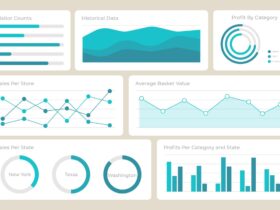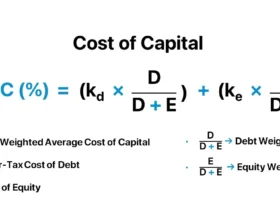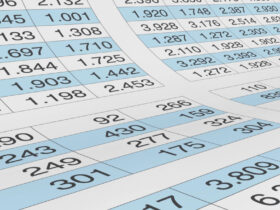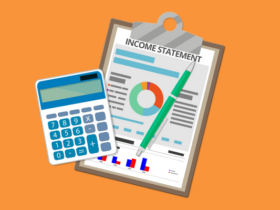Common Investment Banking Interview Questions
With the start of a new academic year, we know that finance interviews are again at the forefront of many of your minds.
The most frequently asked technical investment banking interview questions and answers across a variety of topics are covered in the following post.
If you’re looking for interview prep resources beyond this article, be sure to take a look at our interview prep training package, and if you feel as though your technical skills need some strengthening ahead of your interview, our financial modeling training will get you where you need to be.

Top Investment Banking Technical Interview Questions
Q. How do you value a company?
This question, or variations of it, should be answered by talking about 2 primary valuation methodologies: Intrinsic value (discounted cash flow valuation), and Relative valuation (comparables/multiples valuation).
- Intrinsic Value (DCF) → The intrinsic value techniques, namely the DCF, is the more academically respected approach. The DCF states the value of a productive asset equals the present value of its future free cash flows (FCFs). The answer should run along the line of project free cash flows for 5–20 years, depending on the availability and reliability of the information, and then calculate a terminal value. Discount both the free cash flow projections and terminal value by an appropriate cost of capital (weighted average cost of capital for unlevered DCF and cost of equity for levered DCF). The unlevered DCF, the more common approach, yields the company’s enterprise value (i.e. firm valuation), from which we need to subtract net debt to arrive at equity value. To arrive at the equity value per share, divide the equity value by the company’s diluted shares outstanding.
- Relative Valuation (Comps) → The comps approach involves determining a comparable peer group – companies that are in the same industry with similar operational, growth, risk, and return on capital characteristics. Truly identical companies of course do not exist, but you should attempt to find as close to comparable companies as possible. Calculate appropriate industry multiples. Apply the median of these multiples on the relevant operating metric of the target company to arrive at a valuation. Common multiples are EV/Rev, EV/EBITDA, P/E, P/B, although some industries place more emphasis on some multiples vs. others, while other industries use different valuation multiples altogether. It is not a bad idea to research an industry or two (the easiest way is to read an industry report by a sell-side analyst) before the interview to anticipate a follow-up question like “tell me about a particular industry you are interested in and the valuation multiples commonly used.”
Q. What is the appropriate discount rate to use in an unlevered DCF analysis?
Since the free cash flows in an unlevered DCF analysis are pre-debt (i.e. a helpful way to think about this is to think of unlevered cash flows as the company’s cash flows as if it had no debt – so no interest expense, and no tax benefit from that interest expense), the cost of the cash flows relate to both the lenders and the equity providers of capital. Thus, the discount rate is the weighted average cost of capital to all providers of capital (both debt and equity).
- Cost of Debt → The cost of debt is readily observable in the market as the yield on debt with equivalent risk, while the cost of equity is more difficult to estimate.
- Cost of Equity → The cost of equity is most often estimated using the capital asset pricing model (CAPM), which links the expected return on a security to its sensitivity to the broader market.
Q. What is typically higher – the cost of debt or the cost of equity?
The cost of equity is higher than the cost of debt because the cost associated with borrowing debt (interest expense) is tax-deductible, creating a tax shield.
Additionally, the cost of equity is typically higher because, unlike lenders, equity investors are not guaranteed fixed payments, and are last in line for liquidation.
Q. How do you calculate the cost of equity?
There are several competing models for estimating the cost of equity, however, the capital asset pricing model (CAPM) is predominantly used on the street. The CAPM links the expected return of a security to its sensitivity to the overall market basket (often proxied using the S&P 500).
The formula to calculate the cost of equity is as follows.
- Risk Free Rate (rf) → The risk-free rate should theoretically reflect the yield to maturity of default-free government bonds of equivalent maturity to the duration of each cash flows being discounted. In practice, the lack of liquidity in long-term bonds has made the current yield on 10-year U.S. Treasury bonds the preferred proxy for the risk-free rate for US companies.
- Market Risk Premium (rm-rf) → The market risk premium represents the excess returns of investing in stocks over the risk-free rate. Practitioners often use the historical excess returns method and compare historical spreads between S&P 500 returns and the yield on 10-year treasury bonds.
- Beta (β) → Beta provides a method to estimate the degree of an asset’s systematic (non-diversifiable) risk. Beta equals the covariance between expected returns on the asset and on the stock market, divided by the variance of expected returns on the stock market. A company whose equity has a beta of 1.0 is “as risky” as the overall stock market and should therefore be expected to provide returns to investors that rise and fall as fast as the stock market. A company with an equity beta of 2.0 should see returns on its equity rise twice as fast or drop twice as fast as the overall market.
Q. How would you calculate beta for a company?
Calculating raw betas from historical returns and even projected betas is an imprecise measurement of future beta because of estimation errors (i.e. standard errors create a large potential range for beta).
As a result, it is recommended that we use an industry beta.
Of course, since the betas of comparable companies are distorted because of different rates of leverage, we should unlever the betas of these comparable companies as such:
- Unlevered Beta (β)= β(Levered) ÷ [1+ (Debt/Equity) (1-T)]
Then, once an average unlevered beta is calculated, relever this beta at the target company’s capital structure:
- Levered Beta (β) = β(Unlevered) × [1+(Debt/Equity) (1-T)]
Q. How do you calculate unlevered free cash flows for DCF analysis?
The formula for calculating the unlevered free cash flow metric is as follows.
- Unlevered Free Cash Flow (UFCF) = Operating Profit (EBIT) * (1 –tax rate) + Depreciation & Amortization – Change in Net Working Capital – Capital Expenditures
Q. What is the appropriate numerator for a revenue multiple?
The answer is enterprise value.
The question tests whether you understand the difference between equity value and enterprise value and their relevance to multiples.
- Equity Value = Enterprise Value – Net Debt
Where:
- Net Debt = Gross Debt and Debt Equivalents – Excess Cash
- Enterprise Value Multiples → EBIT, EBITDA, unlevered cash flow, and revenue multiples all have enterprise value as the numerator because the denominator is an unlevered (pre-debt) measure of profitability.
- Equity Value Multiples → Conversely, EPS, after-tax cash flows, and the book value of equity all have equity value as the numerator because the denominator is levered – or post-debt.
Q. How would you value a company with negative historical cash flow?
Given that negative profitability will make most multiples analyses meaningless, a DCF valuation approach is appropriate here.
Q. When should you value a company using a revenue multiple vs. EBITDA?
Companies with negative profits and EBITDA will have meaningless EBITDA multiples. As a result, Revenue multiples are more insightful.
Q. Two companies are identical in earnings, growth prospects, leverage, returns on capital, and risk. Company A is trading at a 15 P/E multiple, while Company B trades at 10 P/E. Which would you prefer as an investment?
Company B. Given the 10x P/E ratio, a rational investor would rather pay less per unit of ownership.























This article is so helpful for my upcoming finance interview, I finally understand how to answer some of the technical questions!
I appreciate the detailed answers to the investment banking interview questions. Helpful content!
Great resource for interview preparation, very informative!
The examples given in this article are really useful, they helped me to grasp the concepts easily.
I appreciate the clear explanations in this post, it made a topic that seemed confusing much easier to understand.
This article provides a clear explanation of technical interview questions in investment banking. Thank you!
Thanks for sharing. I read many of your blog posts, cool, your blog is very good.
Your article helped me a lot, is there any more related content? Thanks!
mosbet mostbet780.ru .
процедура банкротства физического лица отзывы
This online casino’s Tiger Fortune is fantastic. tiger fortune
Сотрудничество с компанией НАПЫЛЕНИЕ РФ, специализирующейся на поставке редкоземельных материалов для различных методов напыления, открывает перед вашим предприятием двери в мир высококлассных инноваций. Работа с нами гарантирует не только доступ к премиальным продуктам, но и возможность заказа требуемого количества.
С широким ассортиментом продукции на основе редкоземельных материалов, от мышьяка до циркония, компания НАПЫЛЕНИЕ РФ готова удовлетворить потребности самых разных заказчиков. Каждый продукт сопровождается обязательными документами, удостоверяющими его происхождение и соответствие всем нормам.
Кроме того, НАПЫЛЕНИЕ РФ понимает важность профессионального взаимодействия и поддержки на каждом этапе сотрудничества. В нашем лице вы найдете не просто продавца, но и партнера, готового предложить квалифицированную помощь и поддержку, опираться на ваши конкретные потребности и адаптировать условия поставки под особенности вашего производства.
Приступая к взаимодействию с НАПЫЛЕНИЕ РФ, вы гарантируете себе плавное и бесперебойное снабжение необходимыми напыляемыми материалами, позволяющее вам без остановки реализовывать самые передовые и технологичные проекты. Ваш бизнес получит надежного партнера, с которым текущие трудности превращаются в завтрашние успехи.
Наша продукция:
Гранулы кремния высокой чистоты.
РедМетСплав предлагает широкий ассортимент отборных изделий из редких материалов. Не важно, какие объемы вам необходимы – от небольших закупок до крупных поставок, мы гарантируем своевременную реализацию вашего заказа.
Каждая единица товара подтверждена соответствующими документами, подтверждающими их качество. Опытная поддержка – то, чем мы гордимся – мы на связи, чтобы разрешать ваши вопросы по мере того как находить ответы под требования вашего бизнеса.
Доверьте вашу потребность в редких металлах специалистам РедМетСплав и убедитесь в гибкости нашего предложения
поставляемая продукция:
Проволока титановая ВТ35 Полоса титановая ВТ35 – это высококачественный сорт титана, обладающий отличной прочностью и коррозионной стойкостью. Она идеально подходит для использования в различных отраслях, таких как авиация, машиностроение и медицина. Благодаря своим уникальным свойствам, полоса титановая ВТ35 обеспечивает надежность и долговечность в эксплуатации. Если вы ищете надежный материал для своих проектов, купить Полоса титановая ВТ35 – отличный выбор. Мы гарантируем высокое качество и конкурентные цены на наш товар. Не упустите возможность дополнить свой бизнес лучшим материалом.
Косметолог в Санкт-Петербурге – Перманентный макияж
I don’t think the title of your article matches the content lol. Just kidding, mainly because I had some doubts after reading the article.
fake prada bag
рефрижераторный осушитель comprag rdx-12 14310003
Thank you for your sharing. I am worried that I lack creative ideas. It is your article that makes me full of hope. Thank you. But, I have a question, can you help me?
Thank you for your sharing. I am worried that I lack creative ideas. It is your article that makes me full of hope. Thank you. But, I have a question, can you help me?
I don’t think the title of your article matches the content lol. Just kidding, mainly because I had some doubts after reading the article.
uyd37o
ictnzo